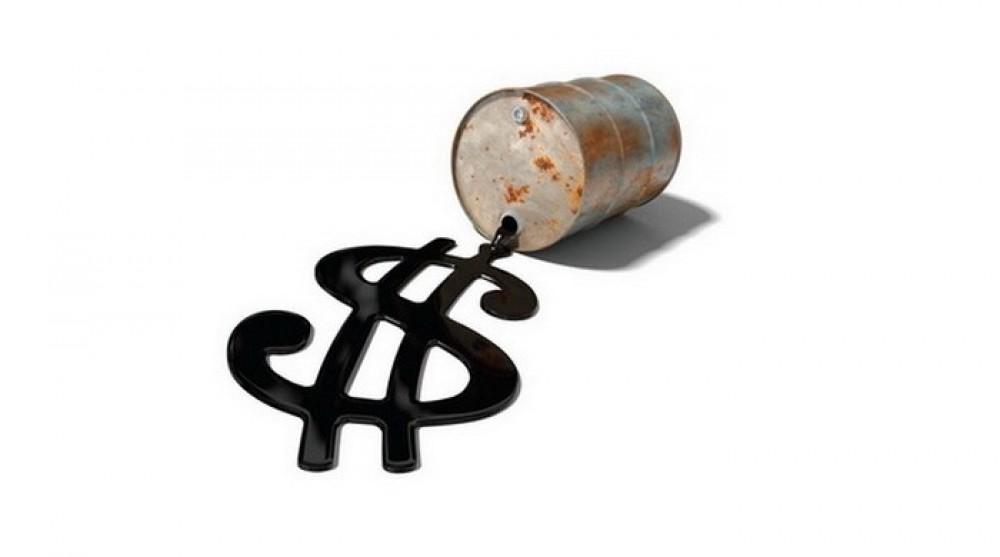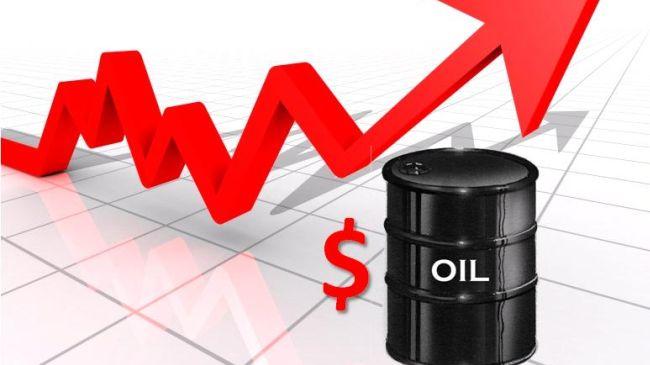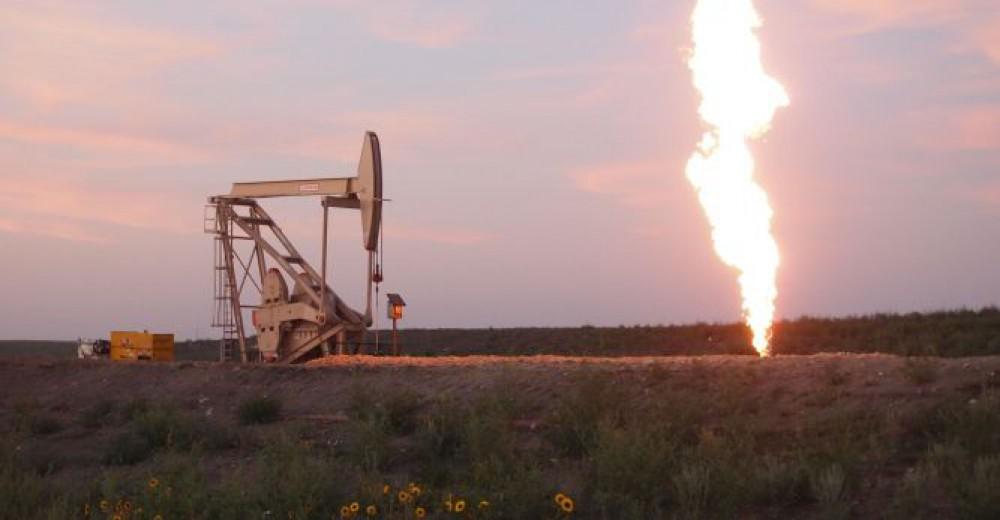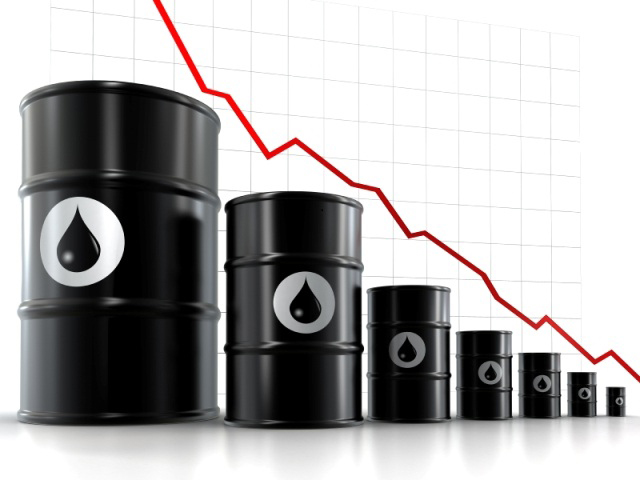#glut in oil
Loading...
-
Over 50 flights delayed at St. Petersburg's Pulkovo Airport
5 July 23:33 -
President Trump may visit China amid invitations from world leaders
5 July 22:26 -
New "Stratus" COVID-19 variant with unique hoarse voice symptom spreads in UK
5 July 21:23 -
Czech Government moves to tighten migration and asylum laws
5 July 20:46 -
Zangazur & Middle Corridors' strategic significance unlocks news potential
5 July 20:20 -
Georgian President offers amnesty to jailed opposition leaders ahead of local elections
5 July 19:55 -
Fire breaks out on Ryanair Plane at Mallorca Airport, 18 injured
5 July 19:22 -
Trump warns Iran against restarting nuclear program
5 July 18:50 -
Kyrgyzstan launches groundbreaking Women Entrepreneurs Finance Code with EBRD Support
5 July 18:21 -
Peace agreement between Armenia and Azerbaijan to transform regional atmosphere, says President Erdoğan
5 July 17:48 -
Azerbaijan’s banks double Russian Ruble transactions in May 2025
5 July 17:22 -
Azerbaijan’s Health Ministry meets UNESCAP Executive Secretary to boost cooperation
5 July 16:50 -
Kazakh media highlights Prime Minister Bektenov’s participation in ECO Summit
5 July 16:19 -
New regular bus route launched from Baku to Khankendi and Lachin
5 July 15:46 -
Azerbaijan installs over 107,000 NCRs, ensuring greater transparency in trade
5 July 15:19 -
Baku, Islamabad deepen strategic partnership to boost regional cooperation
5 July 14:55 -
PM Ali Asadov meets UNESCAP Executive Secretary, discusses upcoming Baku Session
5 July 14:21 -
Azerbaijan, Pakistan sign investment MoU during ECO Summit in Khankendi
5 July 13:41 -
Iran’s President hails constructive talks with President Ilham Aliyev at ECO Summit
5 July 13:28 -
Azerbaijan’s Top Security Chief urges new graduates to uphold loyalty and vigilance at SSS Academy Ceremony
5 July 12:55 -
President Ilham Aliyev congratulates Nicolas Maduro
5 July 12:23 -
State Maritime and Port Agency returns to profit in 2024 after previous year's loss
5 July 12:11 -
State Security Service Academy holds graduation ceremony for new officers
5 July 11:34 -
Blood Donation Campaign held at Azerbaijan Institute of Theology on Ashura Day
5 July 11:06 -
UK and Regional leaders highlight strategic importance of Trans-Caspian Corridor at London Forum [PHOTOS]
5 July 10:35 -
Price of Azeri Light Crude drops slightly in global markets
5 July 10:00 -
Abnormal Japan heat may cause global matcha shortage
5 July 09:00 -
ECO Summit in Khankendi marks turning point in South Caucasus geopolitics
5 July 08:30 -
Chinese cars expand their share in Central Europe
5 July 08:00 -
Poland to buy more than $6 billion worth of tanks from South Korea
4 July 23:55 -
Taiwan launch self-built stealth corvette
4 July 23:30 -
China’s Abee launches high-powered mini PC with built-in AI engine
4 July 22:50 -
Arab states of Persian Gulf begin to introduce single tourist visa
4 July 22:34 -
PM Shairf: We agreed upon expanding bilateral co-op between Pakistan, Azerbaijan across key sectors
4 July 22:21 -
Kalbajar survivors testify to Armenian attacks on civilians and children [PHOTOS]
4 July 22:08 -
Production of Tesla robots delay
4 July 21:50 -
Swiss Nuclear Plant partially shut down amid heatwave
4 July 21:22 -
Azerbaijan represented for first time at China's largest television and film market [PHOTOS]
4 July 20:39 -
Minister highlights Azerbaijan’s preparations for CIS Games 2025
4 July 20:11 -
ECO region emerges as major source of tourists fueling economic diversification
4 July 19:35 -
Official luncheon hosted in Shusha on behalf of President Ilham Aliyev in honor of 17th ECO Summit participants [PHOTO]
4 July 19:28 -
Electronics sector shows mixed signals as output shifts in Azerbaijan
4 July 19:16 -
Moody’s raises Azerbaijan’s country rating ceilings for national and foreign currency liabilities
4 July 18:56 -
Azerbaijani President meets with President of Türkiye Recep Tayyip Erdoğan in Khankendi [PHOTOS]
4 July 18:40 -
Gabala hosts CIS Youth Organizations Forum [PHOTOS]
4 July 18:33 -
Moroccan journalists visit Azerbaijan Culture Ministry [PHOTOS]
4 July 18:12 -
Prospects for anti-doping cooperation between Azerbaijan and Poland discussed
4 July 18:00 -
Int'l Mugham Center marks anniversary of eminent tar player [PHOTOS]
4 July 17:41 -
Chairman of AERA Board meets with General Director of Kyrgyz Energy Settlement Center
4 July 17:36 -
19th Baku Summer Energy School successfully concluded [PHOTOS]
4 July 17:25 -
Azerbaijan and South Korea pledge stronger ties on emergency response
4 July 17:19 -
Top investment companies announced by Baku Stock Exchange for 1st half of 2025
4 July 17:05 -
President Ilham Aliyev begins his meeting with Iranian President Masoud Pezeshkian in Khankendi [PHOTOS]
4 July 17:01 -
Next meeting of Council for Youth Affairs of CIS Member States held in Gabala [PHOTOS]
4 July 16:52 -
China–Kyrgyzstan–Uzbekistan railway to be linked with Trans-Afghan corridor, says Mirziyoyev
4 July 16:36 -
New media rules advance in Azerbaijani Parliament
4 July 16:18 -
Exports of Azerbaijani crude oil products to Netherlands more than double
4 July 16:00 -
Tajikistan supports creation of regional energy market within ECO
4 July 15:54 -
Registration for classic car run and Horsepower chovgan competition underway [VIDEO]
4 July 15:42 -
Turkiye remains key market despite dip in Azerbaijani exports
4 July 15:37 -
Uzbek President proposes hosting ECO Trade Ministers’ meeting in Tashkent
4 July 15:28 -
Azerbaijani hostage recounts brutality by Armenian forces in Military Court
4 July 15:16 -
Azerbaijan, Belgium explore cooperation on humanitarian de-mining [PHOTOS]
4 July 14:52 -
Kyrgyz President proposes preferential port fees for landlocked ECO countries
4 July 14:44 -
Children's Philharmonic holds auditions to discover new talents [PHOTOS]
4 July 14:31 -
Two Azerbaijan–Saudi Arabia MoUs officially ratified
4 July 14:17 -
Ensuring rights of Western Azerbaijanis deported from Armenia is of great importance, President
4 July 14:10 -
President Ilham Aliyev: Azerbaijan offers a highly favorable investment climate
4 July 14:06 -
Lapis Lazuli corridor revives ancient trade routes with modern impact [OPINION]
4 July 14:01 -
Parliament approves 2024 state budget execution bill in final reading
4 July 13:58 -
President: Extensive reconstruction efforts are underway in Karabakh and East Zangazur
4 July 13:46 -
Azerbaijan assures stable internet access amid security concerns
4 July 13:40 -
Nationwide vaccination training successfully completed in Azerbaijan [PHOTOS]
4 July 13:22 -
Azerbaijani President meets with Prime Minister of Pakistan in Khankendi
4 July 13:08 -
Uzbekistan awards People's Artist Sahib Pashazade with Cultural Envoy medal [PHOTOS]
4 July 13:08 -
President Ilham Aliyev addresses 17th ECO summit in Khankendi [PHOTOS/VIDEO]
4 July 13:00 -
Chess Tour Azerbaijan to resume with Lankaran Open Festival
4 July 12:49 -
Trend News Agency's ECO analysis gains regional media attention [PHOTO]
4 July 12:44 -
Women's volleyball team welcomes new head coach
4 July 12:31 -
President Ilham Aliyev receives UAE Minister of Industry and Advanced Technology in Khankendi [PHOTOS]
4 July 12:23 -
Saudi delegation visits Baku for peer review of state audit office activities
4 July 12:13 -
Shaki gets ready to host Silk Road Int'l Music Festival
4 July 11:57 -
President Ilham Aliyev congratulates Donald Trump on occasion of USA's national holiday
4 July 11:44 -
Azerbaijani Foreign Minister meets UNESCAP executive secretary in Khankendi
4 July 11:38 -
Turkish President Recep Tayyip Erdoğan embarks on official visit to Azerbaijan [PHOTOS]
4 July 11:33 -
Azerbaijani, Turkmen FM meet during ECO summit in Khankendi
4 July 11:24 -
Azerbaijan and Pakistan reaffirm strategic ties at ECO summit in Khankendi
4 July 11:19 -
Azerbaijan launches smart transportation and automation system in pediatric medical institutions [PHOTOS]
4 July 11:03 -
Azerbaijan and UAE officials discuss strategic parternship in Khankendi
4 July 11:02 -
Positive momentum in Azerbaijan–Italy trade continues in early 2025
4 July 10:51 -
Footage of ECO Summit participants' visit to Aghdam posted on President Ilham Aliyev's social media [VIDEO]
4 July 10:37 -
Azerbaijan sees significant rise in hazelnut exports in early 2025
4 July 10:35 -
Iran's Pezeshkian arrives in Azerbaijan [PHOTO]
4 July 10:27 -
President of Tajikistan arrives in Azerbaijan
4 July 10:23 -
Kazakhstan’s Prime Minister arrives in Azerbaijan for ECO’s 17th summit
4 July 10:13 -
Azeri Light oil price rises at key ports
4 July 10:00 -
International manhunt ends in extradition of Azerbaijani robbery suspect
4 July 09:25 -
Indonesia to cut logistics costs to boost export competitiveness
4 July 09:00 -
President Aliyev welcomes world leaders to Khankendi, showcasing Azerbaijan’s transformation
4 July 08:30 -
Italian banking group test storage of cryptocurrencies
4 July 08:00












